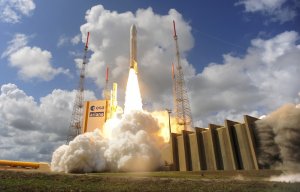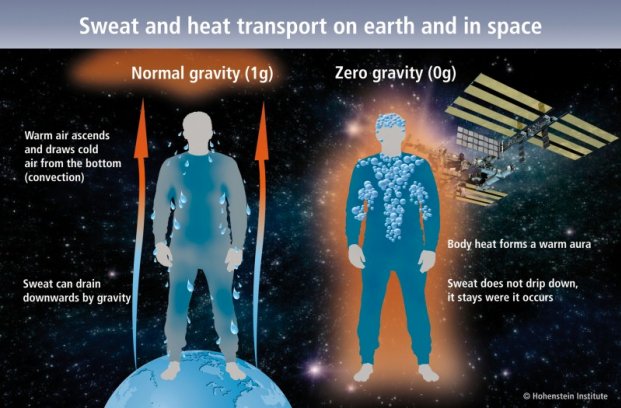
Textiles needed for a mission to Mars
The Spacetex project examined how heat and moisture behaved in fabrics in zero gravity during an astronaut’s mandatory daily physical exercise.

19th July 2017
Innovation in Textiles
|
Bönnigheim
Hohenstein’s Dr Jan Beringer will discuss the Spacetex project, the multi-organisational performance textile research initiative that was conducted aboard the International Space Station in 2014, with attendees at the 6th annual International Space Station R&D Conference this week.
The Spacetex project examined how heat and moisture behaved in fabrics in zero gravity during an astronaut’s mandatory daily physical exercise and how this affected his comfort and performance. The results of the Spacetex project will help fabric engineers outfit future astronauts to keep them at peak physical and mental condition during long space voyages in extreme environments, such as on a journey to Mars.
Dr Beringer, the Principal Investigator, will share an update on the completed investigations and future planned experiments. His presentation is entitled The Spacetex Project- Innovative and Highly Functional Fabrics for Humans in Space and on Earth.
As the leading authorities in the field of clothing physiology, the study of how apparel interacts with the human body and the environment to affect comfort and performance, Hohenstein says it was the ideal research institute to lead the Spacetex investigation. In partnership with the Charité University Research Hospital in Berlin, Swiss performance fabric manufacturer, Schoeller Textil AG, and DLR, the German Aerospace Center, Spacetex was sanctioned by NASA and conducted in cooperation with the European Space Agency (ESA).
“Many things function differently in space,” said Beringer. “Spacetex ensures that we understand gravity’s effect on fabric features like wicking, sweat transport, sweat evaporation, evaporative heat loss or cooling, and the impact on human thermoregulation as well as overall comfort. This knowledge is very important for ensuring that astronauts are optimally outfitted for current and future space travels. The findings can also improve the evaporative heat loss or cooling performance of garments that are designed for extreme conditions here on Earth, such as very hot, humid environments.”
In the first phase of the Spacetex project, German ESA astronaut, Dr Alexander Gerst, conducted the Spacetex experiments while residing on the International Space Station. Dr Beringer and fellow Spacetex Principal Investigator, Prof Dr Hanns-Christian Gunga, of the Center of Space Medicine at the Charité, started working with Dr Gerst on Earth in February 2014.
They evaluated his performance while wearing work out apparel made of a special Schoeller polyester fabric system and also while wearing regular cotton apparel. Dr Gerst repeated these tests while in residence at the International Space Station in order to compare the effect of gravity. The second phase of Spacetex is now underway and results are expected at the end of 2018.

Business intelligence for the fibre, textiles and apparel industries: technologies, innovations, markets, investments, trade policy, sourcing, strategy...
Find out more